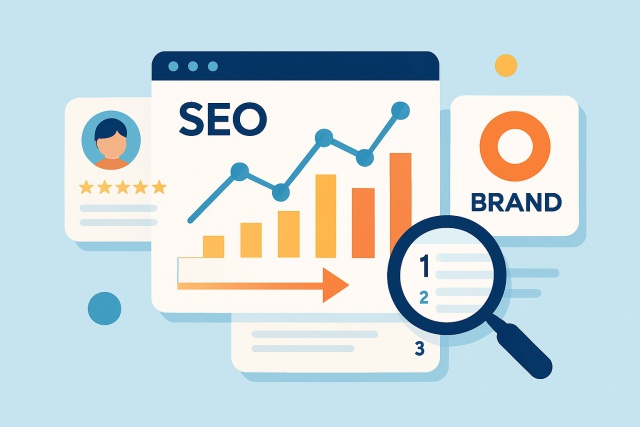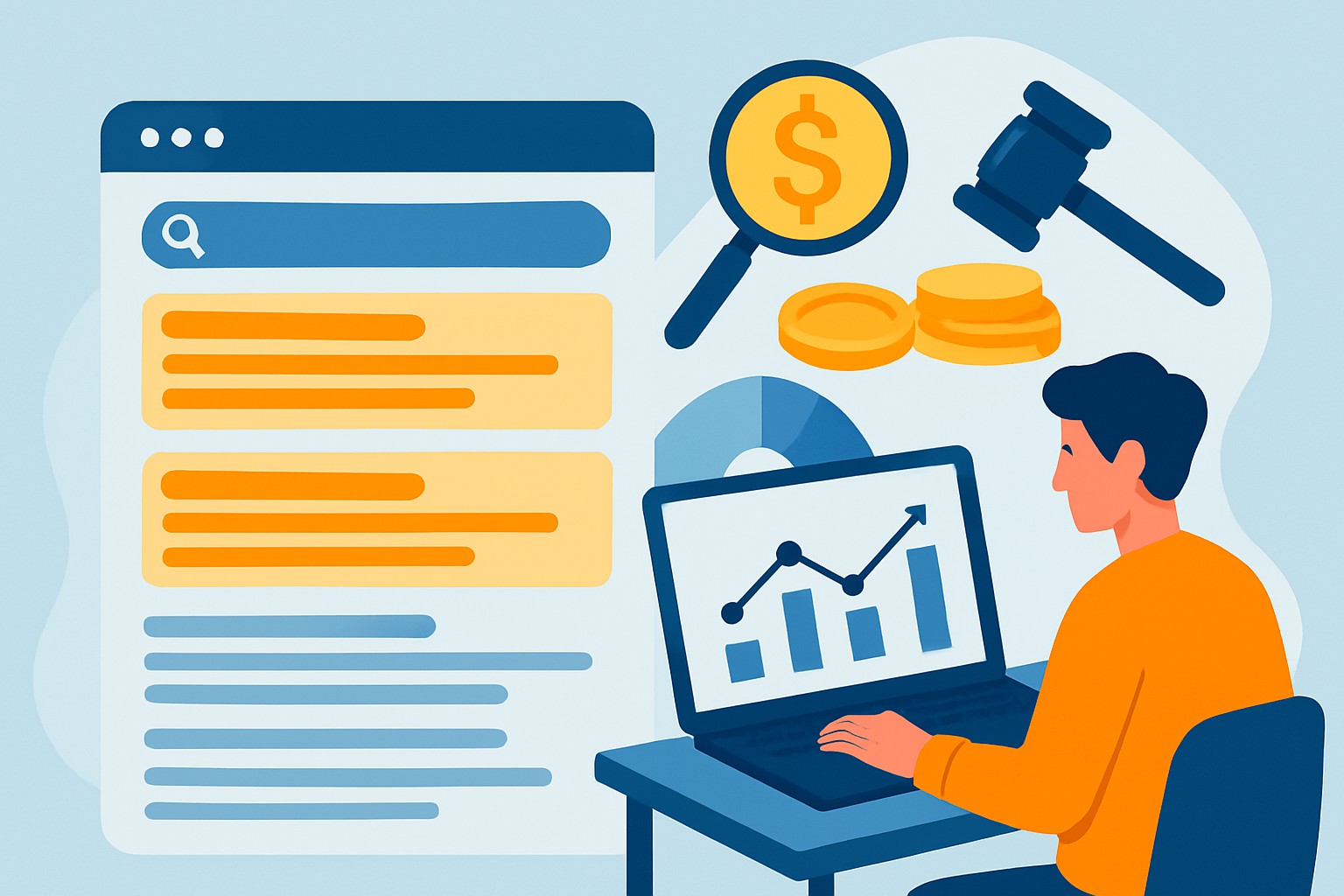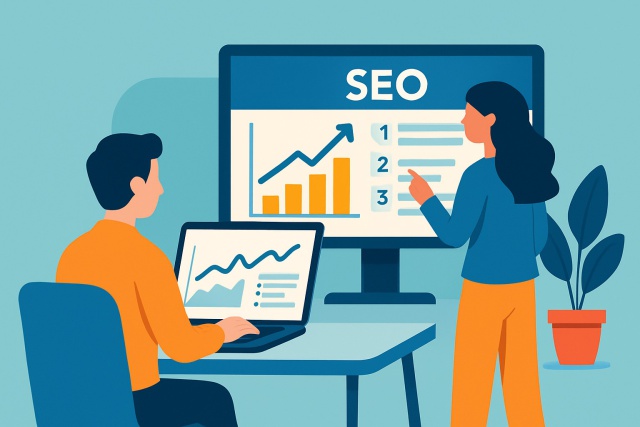
SEO and Reputation Management for Your Brand
Master SEO and reputation management to elevate your brand’s online presence. This guide offers acti...

Paid search advertising is a big player in today’s digital marketing world, often bringing in traffic fast and showing results you can actually measure. Many people find it a bit tricky to wrap their heads around. This article cuts through the jargon by breaking down how paid search really works, unpacking the key terms and steps.
Paid search advertising happens when businesses cough up some cash to get their ads featured right alongside search results for particular keywords. Unlike the organic results you’ve earned through SEO hard work, these paid ads pop up simply because someone’s bought the spot.
Terms like PPC (pay-per-click), SEM (search engine marketing) and keywords might feel like jargon at first glance. PPC means you only shell out cash when someone actually clicks your ad—no clicks mean no charges which is pretty neat. SEM is the whole toolkit for promoting websites via search engines and covers all the bases.
Paid search kicks off the very moment a user types a query into a search engine. That query sparks a lightning-fast auction where advertisers throw their bids into the ring, hoping to snag the spotlight. The ads that come out on top get lined up and shown to the user, who might just click on one.
A user types a search query into a search engine like "best coffee shops near me"—trying to find their next caffeine fix.
Behind the scenes the search engine kicks off an auction to figure out which ads fit that query best.
Advertisers throw their hats in the ring by bidding on keywords connected to the search and showing how much they are ready to shell out per click.
Ads get ranked not just by the highest bid but also by the quality of the ad. This combo decides where they land on the search results page.
The cream of the crop ads show up usually lounging at the top or hanging out at the bottom of the results.
When someone clicks on an ad the advertiser coughs up the agreed cost per click and the user is whisked away to the advertiser’s landing page.
The whole process takes just milliseconds and runs on ad auctions where relevance and bids combine to determine which ads get the best spots. This ranking called Ad Rank does the heavy lifting to make sure users see ads that actually matter — not just the loudest bidders throwing money around.
Keyword bidding is the heart of paid search. Advertisers set the stage by deciding how much they are willing to pay for their ads to appear alongside certain search terms. Pricing options like CPC (cost-per-click), CPM (cost-per-thousand impressions) and CPA (cost-per-acquisition) offer plenty of wiggle room to tailor campaigns to different goals.
Quality Score is a big deal when it comes to how search engines size up the usefulness and relevance of your ad and landing page for people on the other side of the screen. It boils down to how snugly your ad fits the keyword, the actual experience people have once they land on your page and what kind of click-through rate you can realistically expect. When your Quality Score looks good you’re often rewarded with better ad placement and lower costs per click.
"Search engines usually give a thumbs-up to advertisers who go the extra mile in creating a smoother user experience—kind of like how a store strategically places its best products front and center to catch shoppers’ eyes and reel them in."
Google Ads stands tall as the go-to paid search platform cherished for its massive reach and finely tuned targeting features. These let advertisers tap into billions of users worldwide every single day. Microsoft Advertising, which you might remember as Bing Ads, offers a solid alternative. Its tools are on par but it often enjoys less crowded playgrounds and usually comes with a friendlier price tag.
| Platform | Network Size | Targeting Options | Cost Models | Notable Unique Features |
|---|---|---|---|---|
| Google Ads | Holds more than 90% of the global search market share, basically the big fish in the pond | Targets based on keywords, demographics, location, and device—covering just about every angle you can imagine | CPC, CPM, CPA | Wide reach, Smart bidding tools, and an extensive display network that keeps expanding like wildfire |
| Microsoft Advertising | Covers about 12% of the search market across Bing and Yahoo, making it a solid underdog in the mix | Targeting by keyword, device, location, and time of day, giving you some nifty ways to zero in without breaking a sweat | CPC, CPM, CPA | LinkedIn targeting integration and generally less competition, which means less elbowing for attention |
| Amazon Advertising | Focuses exclusively on product searches within Amazon, perfect for catching shoppers right in the act | Uses product keywords and interest-based targeting, helping you pinpoint individuals who already have their wallets open | CPC | Reach shoppers who are often ready to buy—the kind of audience you want to greet with open arms |
Paid search ads typically come with a handful of key elements that team up to grab those all-important clicks. You’ve got headlines that stop you in your tracks, crisp descriptions, display URLs that give a sneak peek of where you’ll land, ad extensions with extra info, and calls to action that gently nudge individuals to take the next step.

Visual breakdown of a paid search ad highlighting its main components
Advertisers tend to keep a sharp eye on key performance indicators like click-through rate (CTR) and cost-per-click (CPC) to get a feel for how their campaigns are performing. They also watch Quality Score, conversion rate and return on ad spend (ROAS). Staying on top of these numbers helps marketers gauge how well their ads connect with the audience and figure out the smartest place to spend their budgets.
Campaign optimization is an ongoing dance that involves strategies like A/B testing various ad copies and fine-tuning keyword lists to spotlight the true top performers. It also includes tweaking bids to find the sweet spot between cost and visibility and polishing landing pages to boost user experience and drive conversions.
Many people assume paid search is too pricey or only a game for big players with deep pockets. But with savvy planning, even small businesses can make it work like a charm. People often expect paid search to magically deliver instant sales. Sure, it can drive traffic quickly but the real magic lies in the strategy and the offers you put on the table and how users actually experience your site.
Clearly nail down your advertising goals and set a budget that makes sense for what you’re trying to pull off—no wishful thinking here.
Dive into keyword research tools to uncover relevant keywords that show strong intent and really click with your audience.
Organize your campaigns and ad groups in a neat and logical way so you can zero in on specific products or services without wasting effort.
Whip up ad copy that truly grabs attention by spotlighting the benefits and including clear compelling calls to action—you want your audience to know exactly what to do next.
Thoughtfully set up your targeting options and choose a bidding strategy geared toward squeezing the best return on your investment.
Launch those campaigns and keep a sharp eye on performance metrics—consider it your campaign’s health check.
Keep the momentum going by continually optimizing your campaigns. Test different ads, fine-tune keywords and bids, and polish your landing pages—small tweaks can make a world of difference.
If you are just starting out it’s usually smarter to keep things simple and focus on key metrics rather than chasing big wins right away. Don’t try to stretch your budget like taffy. Instead, put your energy into a few keywords and ads that show promise. Tools like Moz Pro and Mangools can be real lifesavers here by making keyword research and tracking feel less like a headache and more like a manageable task.
18 articles published
Transforming the field of Internet Marketing, Orion Chadwick weaves a tapestry of creativity, data-driven insights, and user psychology, captivating audiences with his visionary perspectives.
Read Pages
Master SEO and reputation management to elevate your brand’s online presence. This guide offers acti...

Explore detailed insights into SEO costs for small businesses, helping you budget wisely and choose...

Discover essential SEO project management tools that help organize your team, streamline workflows,...

Discover actionable outreach strategies designed to help you attract more SEO clients. Follow this p...